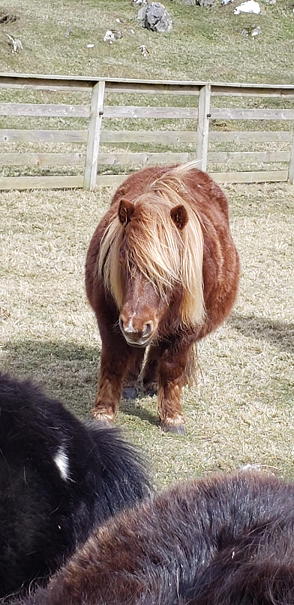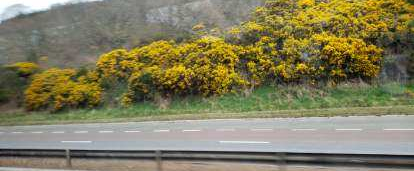Last Updated on June 12, 2022

Shetland Pony
Shetland Islands and Inverness
Our first overnight on board the ship, crossing the North Sea between Bergen, Norway and the Shetland Islands, Scotland, was a regular rock ‘n’ roller. Fortunately, everyone was in bed and not stumbling around, bumping fore and aft, port and starboard. I was awakened several times sensing myself sliding toward the foot of the bed, then the head, sensing a shift toward the right, then the left. I dared to get up and look out at the night sea…and then wished I hadn’t.
At our first port of call, the Shetland Islands, I couldn’t wait to see a cute little Shetland Pony. You know, they always stand with their backs to the wind which explains why they always have that long hair hanging in their faces.
Then there’s all those chubby Shetland Sheep grazing all over the place on public lands. There’s also small Shetland Coos which don’t look anything like our coos here in the US. (The only similarity between the two types of coos is the moos.) Like Shetland Ponies, Shetland Coos also have lots of hair hanging in their faces.
There used to be Shetland Pigs as well, but they went extinct for reasons that our tour guide did not explain. But Shetland Sheepdogs, Shetland Geese, and Shetland Ducks are still around. It is said that the Shetland Islands have their own distinct breeds because this archipelago of islands is so remote.
The Shetland Islanders proudly have their own flag which is a clever combination of the Norwegian flag and the Scottish flag. I was surprised to hear that the Scots here identify quite strongly with Norwegians, which should not be surprising given all their history with the Vikings…which is a story for the next time.
There’s a big successful aqua-culture industry here in the Shetland Islands – mostly salmon and mussels. Interestingly, the Dutch people developed a huge herring export business in this region that flourished from the 1500’s to the 1900’s. At the height of this industry, nine to ten thousand Dutch people lived in the Shetland Islands.
Inverness, in the Scottish Highlands, was our second port of call. Inverness is a “new old” city in that it’s, well, old yet new and growing and prospering. In fact, with the discovery of oil in Scotland in the 1970’s, the country’s overall economy greatly improved. However, it seems that no sooner did they discover oil than oil started getting a bad rep, so now they’re planning to transition from oil to wind power. BTW, it is Queen Elizabeth who gets to decide when a place is called a village or a town or a city, etc.
Inverness is where I bought a keychain made with a scrap of Harris Tweed for my husband since he owns and loves many second-hand Harris Tweed jackets…which he rarely wears. (I’m considering cutting them up and creating little gewgaws like keychains. SSHHH.)
All alongside the roads in Inverness and throughout the Scottish Highlands, a yellow-flowering bush called “gorse” grows in great abundance. Actually, it is a thorny, invasive species, but it smells like coconut which is probably about as close to the smell of the actual fruit that a Scots can get without traveling to the tropics.

Gorse
I am disappointed to admit that I skipped our next stop, Scotland’s capital Edinburgh, the following day, but between the miserable weather and my still-recovering, bruised knees (don’t ask) and the worrisome prospect of negotiating safe passage onto a dinghy just to reach that shore, I decided to bag it.
Julie Helms
P.S. Several readers have asked about my old boyfriend Joe whom I mentioned in the last post. Joe had red hair and played the drums. That’s it. Except for the fact that as we drifted apart during the summer after high school graduation, I felt like I had lost a limb.
